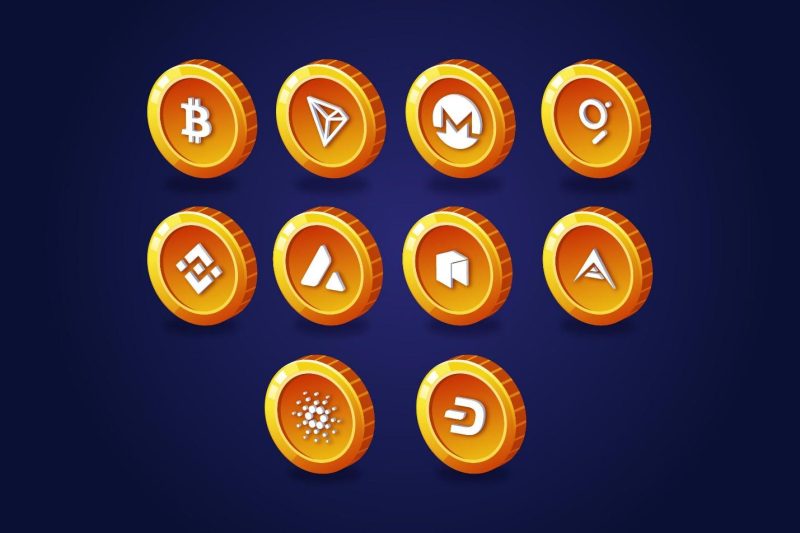Blockchain and cryptocurrency have grown rapidly in recent years, becoming increasingly interconnected with the regulated financial system. Though the industry faces regulatory and other challenges, it will fully realize its potential, creating scalable use cases that will impact millions of people. Cryptocurrencies can compete against other online payment methods, such as debit/credit cards and PayPal. In the competition between cryptocurrencies, some lose value and don’t recover, while others maintain their value for a long time.
With dozens – even hundreds – of new cryptocurrencies launched each week, a project must emphasize its unique benefits to become more valuable or desirable. Although the blockchain space is saturated, TRON (TRX) distinguishes itself from others through specific features, namely high performance, a content-centric vision, and developer-friendly economics. TRON is a visionary initiative focused on creating the foundation for a fully decentralized web ecosystem. The TRON price has shown resilience and steady growth lately, but it’s still subject to volatility.
A Short History Of Tron Everyone Should Know
Justin Sun, who was born in China but is now a citizen of Saint Kitts and Nevis, developed TRON in 2017 to change the way digital media is shared and monetized. The TRON Foundation raised $70 million through an Initial Coin Offering (ICO) shortly after China outlawed digital tokens. Sun is a well-known figure in the cryptocurrency world, not just for establishing TRON but also for acquiring BitTorrent in 2018 for $140 million, launching the BTT token, and later becoming involved with exchanges like HTX and Poloniex.
Tron was initially launched as an ERC-20 token on the Ethereum blockchain before migrating to its own mainnet in 2018. This transition gave rise to TRON’s native token standards – TRC-10 and TRC-20 – that are similar in design to Ethereum’s ERC-20 but tailored for the TRON network. TRC-10 doesn’t require smart contracts, making it more straightforward to create and manage tokens, while TRC-20 is preferred for decentralized applications (dApps), decentralized finance (DeFi), and projects requiring complex logic and interactions.
TRON’s shift from Ethereum’s ERC-20 token standard to its own mainnet in 2018 mobilized the community with tutorials, countdowns, and support channels bustling with activity. The launch of the TRON Virtual Machine, a lightweight, Turing-complete virtual machine designed for the TRON ecosystem, opened the door for smart contract developers to build directly on TRON. Moving off Ethereum allowed TRON to take ownership of its protocol, branding, and roadmap.
Core Technology And Differentiating Features
TRON is a decentralized digital platform with a unique consensus mechanism. It operates using a Delegated Proof of Stake (DPoS) consensus algorithm where high-performance nodes are chosen impromptu by holders who take their interests into serious consideration. Token holders delegate their voting power to trusted representatives for transaction validation and network security. Block producers on the TRON network are referred to as Super Representatives (SRs) and have the responsibility of securing the network, validating transactions, and making governance decisions.
TRON’s blockchain is organized into three distinct layers:
- Core layer: It performs critical blockchain tasks, such as transaction validation, account management, and smart contract execution. The core layer deploys a stack-based Virtual Machine with an optimized instruction set, which allows Java (and future languages) for writing smart contracts.
- Storage layer: TRON’s unique storage layer combines block storage (historical transactions) and state storage (current account and contract states). It’s optimized for stability, security, and fast read/write performance.
- Application layer: The application layer helps software engineers interact with the TRON ecosystem. Well-defined interfaces and software development kits enable users to rapidly build and deploy dApps and custom wallets. Google’s Protocol Buffers guarantee seamless, multi-language data serialization and extension.
TRON sets itself apart through a blend of high throughput, novel resource models, a content-centric vision, and developer-first tools.
Transaction Efficiency And Cost
Rather than charging gas per transaction, TRON grants every account daily bandwidth and energy credits, which allows the network to process thousands of transactions per second at minimal cost. When the quotas deplete, users can stake TRON to cover the costs. Fixed fees include 9,999 TRX for setting up a witness node, 1.024 TRX for issuing a TRC-10 token, and just 0.1 TRX to register a new account. To buy TRON, you need a cryptocurrency exchange or a cryptocurrency wallet with an integrated buying feature.
Entertainment And Content Focus
TRON aims to decentralize content distribution by leveraging the BitTorrent File System to shard and replicate files across peer nodes, therefore eliminating reliance on centralized servers. The native cryptocurrency facilitates microtransactions, whether for subscriptions, tips, or pay-per-view. Creators can earn with minimal fees and no intermediaries, meaning they can publish, store, and monetize their content without relying on traditional platforms. TRON accommodates a vibrant dApp ecosystem in gaming, streaming, and social platforms.
Factors Contributing to Tron’s Rise in Ranking
TRON is currently among the top 20 cryptocurrencies by market capitalization. As of today, it sits at #9, with a market capitalization of $32.08 billion, which reflects its stability, adoption, and perceived legitimacy within the cryptocurrency market. TRON enjoys deep order books and tighter spreads on major exchanges, making it easy for retail and institutional investors to buy, sell, or hedge large positions. TRC-20, also known as USDT-TRON, is Tether’s USDT issued on the TRON network. TRON’s ranking isn’t just a number, but a strong indicator of its established position and functional ecosystem.
Justin Sun positioned TRON on the world stage by launching developer grant programs and fostering DeFi and NFT partnerships that spurred the growth of applications and user activity on the TRON network. It’s worth mentioning the TRON DAO Reserve, which is committed to safeguarding the overall blockchain industry and cryptocurrency market. Led by TRON< it’s organized in a decentralized manner. TRON’s Nasdaq listing illustrates Sun’s ability to bridge cryptocurrency innovation with traditional capital markets.
Concluding Remarks
TRON has consistently maintained a strong position in the cryptocurrency market owing to investor interest, ecosystem development, technical upgrades, and community support. Although the cryptocurrency market is inherently volatile, it’s safe to say TRON will continue to grow in the coming years. The blockchain space is highly competitive, so TRON must continue to innovate to have an edge over the competition.








